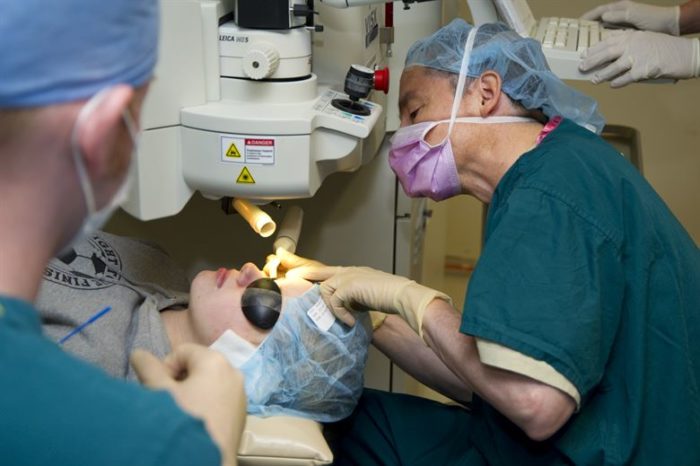Our vision is going downhill.
All around the world, the prevalence of shortsightedness is increasing, due in large part to how much time we spend looking at digital screens.
By 2020, it’s estimated that 2.5 billion people will have trouble seeing nearby objects clearly.
LASIK surgery has grown increasingly popular over the last decade. Every year, the technology improves and costs come down.
However, there are alternatives out there, some less invasive than others. If you are considering vision correction surgery, it’s important to know all of your options.
PRK
Before LASIK, many people resorted to PRK, another form of laser vision correction used to treat astigmatism, nearsightedness, and farsightedness.
In the procedure, the outer layer of the cornea is removed and left to reform over 3-4 days. Surgeons use an excimer laser to reshape the surface of the cornea and correct one’s vision.
Those with irregularly shaped corneas or jobs that involve a lot of direct eye contact (e.g. boxers) who are ineligible for LASIK may be good candidates for PRK.
SMILE
Approved in 2016, SMILE is one of the more advanced laser vision procedures available today. SMILE is a less-invasive form of laser eye surgery in which the doctor reshapes the cornea by removing a small amount of tissue.
Rather than using an excimer laser, surgeons use a femtosecond laser to make tiny incisions no more than 3mm wide, whereas LASIK results in a 20mm flap. As a result, patients experience less corneal instability and have very limited risk of complications post-surgery.
Implantable Contact Lenses
Implantable contact lenses have become a popular option for people over the age of 21 with stable vision. In a two-step process, surgeons insert Visian Implantable Collamer Lenses behind each iris through small corneal cuts.
Implantable contact lenses can treat a wide range of nearsightedness beyond LASIK’s capabilities. Plus, if patients are unsatisfied, the lenses can be removed easily.
Refractive Lens Exchange
Refractive lens exchange involves surgeons replacing the crystalline lenses in the eyes with artificial lenses. The procedure is painless and doesn’t take for long. However, it’s not typically recommended to those who could also get implantable contact lenses.
Those with presbyopia or hyperopia may be good candidates for refractive lens exchange.
In Development
Columbia researcher, Sinisa Vukelic, has developed a technique that sends fast, repetitive pulses of low energy to change the macroscopic geometry of corneal tissue. It’s a non-surgical procedure that relies on the use of a femtosecond oscillator to induce a low-density plasma without causing any cellular damage or tissue disruption.
Vukelic’s technique is currently undergoing clinical trials. Results thus far have been promising.
Choosing the Right Option for You
It’s important to remember that all vision correction procedures involve some risk. There are cases where people don’t respond well to certain treatments and have to go with alternative approaches.
Take the time to do your own research and see what options may suit your specific needs well. Then, consult your eye doctor to learn more about which path might be best for you.
Good luck!

